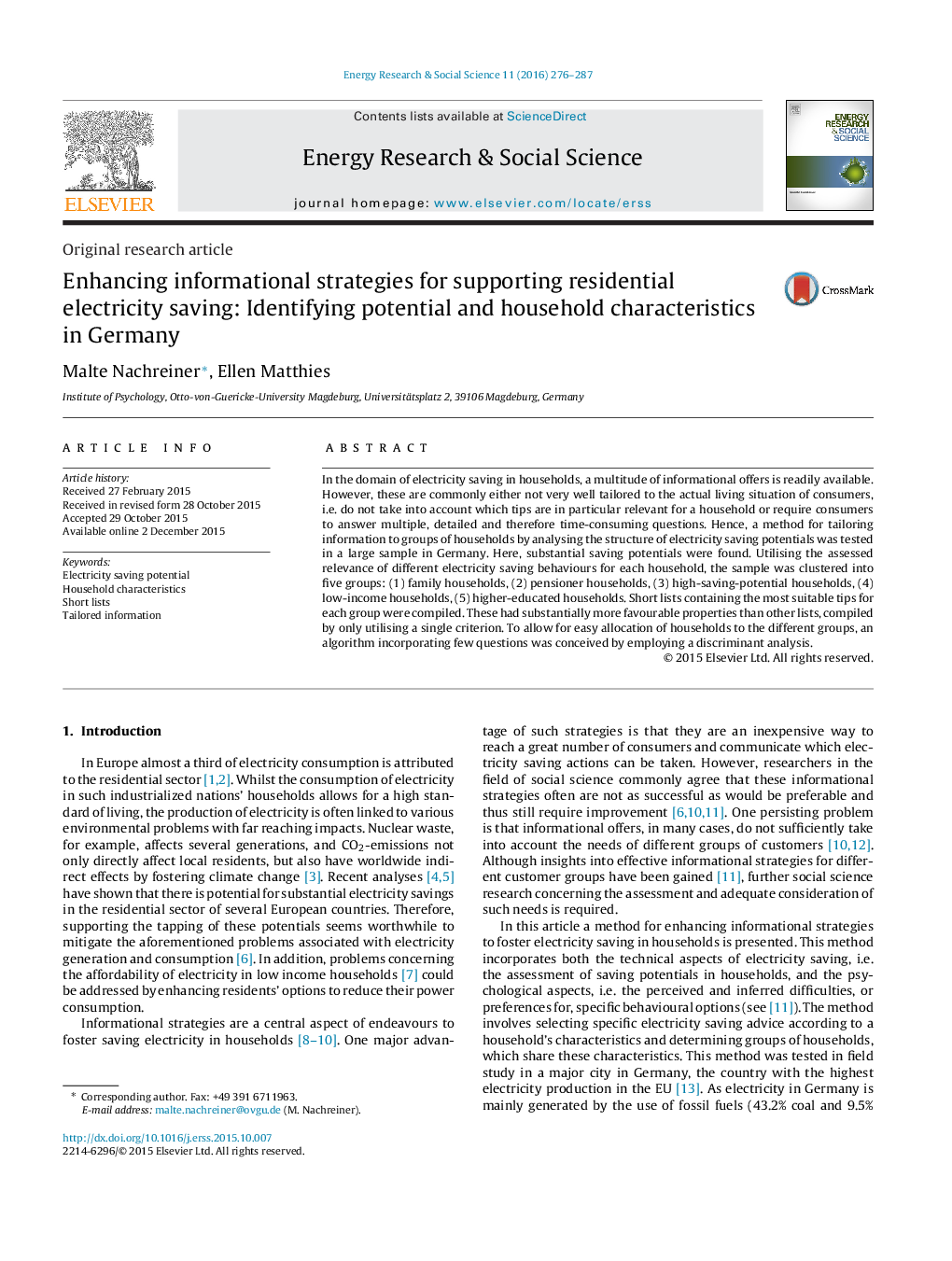| Article ID | Journal | Published Year | Pages | File Type |
|---|---|---|---|---|
| 6558395 | Energy Research & Social Science | 2016 | 12 Pages |
Abstract
In the domain of electricity saving in households, a multitude of informational offers is readily available. However, these are commonly either not very well tailored to the actual living situation of consumers, i.e. do not take into account which tips are in particular relevant for a household or require consumers to answer multiple, detailed and therefore time-consuming questions. Hence, a method for tailoring information to groups of households by analysing the structure of electricity saving potentials was tested in a large sample in Germany. Here, substantial saving potentials were found. Utilising the assessed relevance of different electricity saving behaviours for each household, the sample was clustered into five groups: (1) family households, (2) pensioner households, (3) high-saving-potential households, (4) low-income households, (5) higher-educated households. Short lists containing the most suitable tips for each group were compiled. These had substantially more favourable properties than other lists, compiled by only utilising a single criterion. To allow for easy allocation of households to the different groups, an algorithm incorporating few questions was conceived by employing a discriminant analysis.
Related Topics
Physical Sciences and Engineering
Energy
Energy (General)
Authors
Malte Nachreiner, Ellen Matthies,
